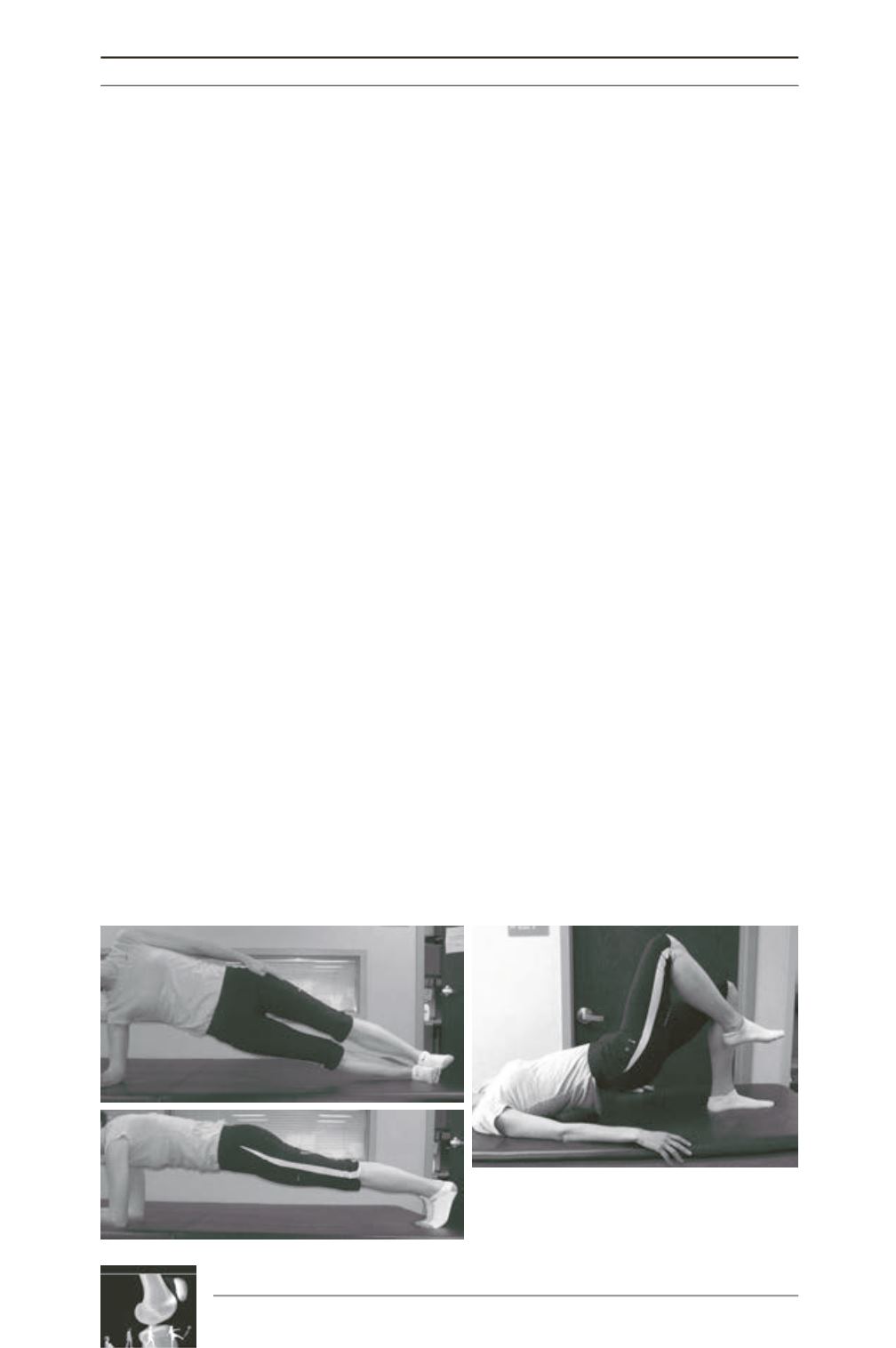

E.A. Arendt
370
extremity kinetics. Femoral internal rotation
(IR) and adduction (ADD) in the CKC knee
flexion can contribute to dysfunctional PF
joint loading and tracking [3, 4, 5, 6]. Patients
reporting PF pain demonstrate this frontal
plane collapse with a wide range of CKC
activities [7, 8] (ie) functional or dynamic
knee valgus. This collapse pattern is, in part,
a result of lack of strength and/or activation
of hip external rotators and posterior buttocks
musculature.
Patients should be instructed to resist the
inward collapse of the knees/thighs toward
midline. Often cueing to actively press the
knees/thighs outward is advantageous, with the
focus of “keeping the knee caps over the toes”.
The use of a resistance band around the thighs
can be useful to physically stimulate this
correction with double stance activity. The
degree to which frontal plane mechanics can be
manipulated depends on the patient’s presenting
bony alignment. Long limb torsion, in particular
excessive external tibial torsion, should be
identified by physical exam. The patient should
be allowed to have the toes point in the direction
of comfort when doing this exercise.
Therapy should progress through the re-training
phase from double stance exercises to single
leg partial squats to dynamic activities such as
jump landing from an elevated height (3
meters) or repeated jumping, with the goal
incorporating functional body movement
patterns into the patient’s sport and daily living
activities. Core stability/trunk control should
be both assessed and addressed in the open
kinetic chain (OKC) and CKC states. Lack of
trunk control, particularly in the frontal plane,
has been associated with higher risk of lower
extremity injury, particularly at the knee joint
[9, 10, 11, 12]. Unfortunately there is neither
well-established standardization nor validation
of clinic-friendly core stability testingmeasures.
Despite that limitation, core/trunk stability
training, including plank poses in multiple
planes (fig. 3 a,b,c), is broadly viewed as an
important element to establish a foundation for
neuromuscular control as patients progress into
more demanding CKC activities.
“Quadriceps avoidance” movement
pattern with gait
Dysfunction of the PF joint is often associated
with dysfunction of the quadriceps muscle
group, without a clear cause and effect
relationship defined [13]. Patients with chronic
PF pain and/or instability often demonstrate a
gait pattern that avoids deeper knee flexion
during the loading response phase of gait. In
extreme cases, a hyperextension thrust pattern
may be employed, in an attempt to gain knee
stability. Pain from impingement of anterior
knee structures then feeds back into the pattern
of quadriceps avoidance/inhibition [14].
Fig. 3 :
a) Side plank pose
b) Single leg bridge
c) Prone plank pose
a
c
b











